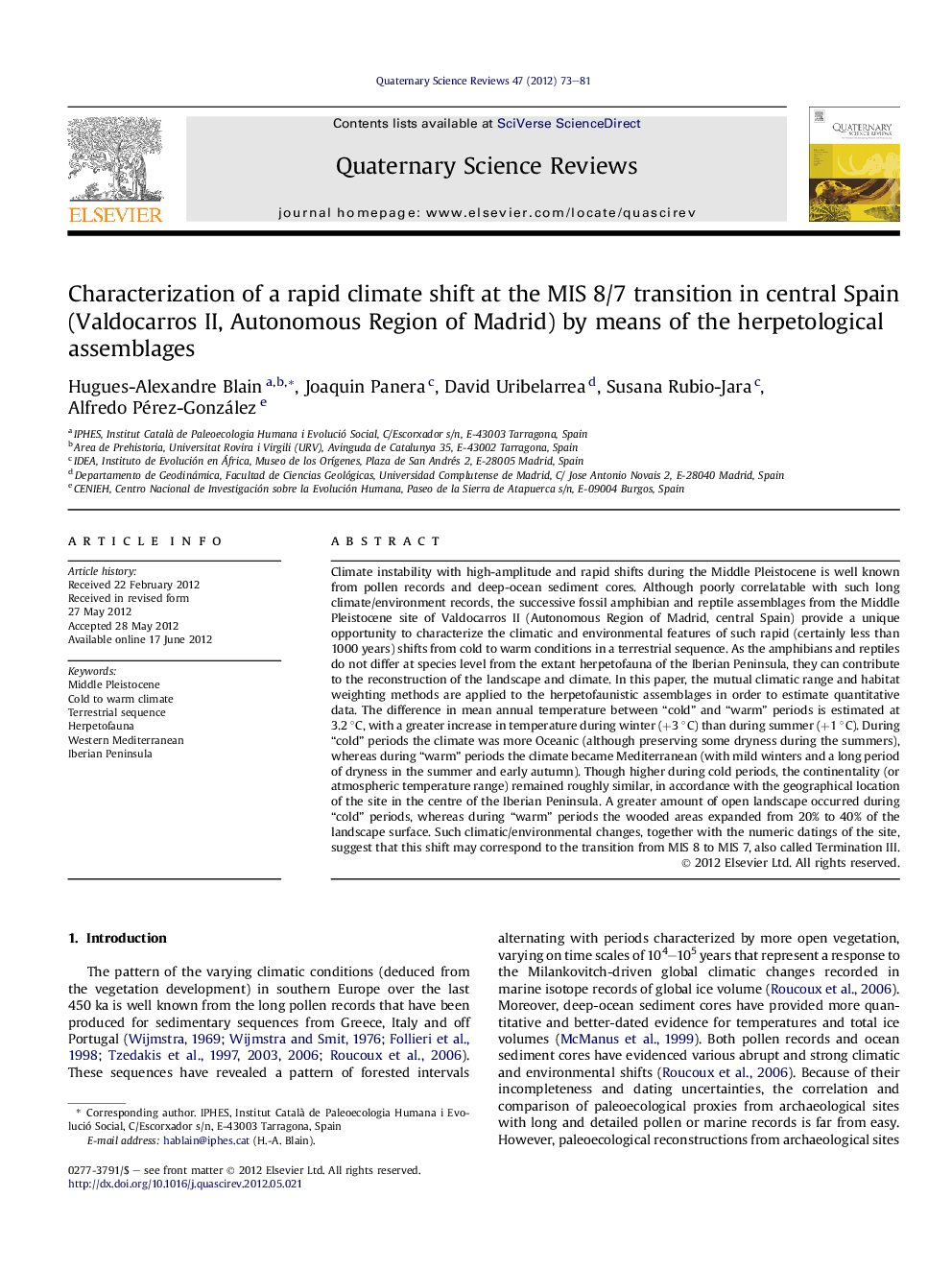| کد مقاله | کد نشریه | سال انتشار | مقاله انگلیسی | نسخه تمام متن |
|---|---|---|---|---|
| 4735740 | 1640887 | 2012 | 9 صفحه PDF | دانلود رایگان |

Climate instability with high-amplitude and rapid shifts during the Middle Pleistocene is well known from pollen records and deep-ocean sediment cores. Although poorly correlatable with such long climate/environment records, the successive fossil amphibian and reptile assemblages from the Middle Pleistocene site of Valdocarros II (Autonomous Region of Madrid, central Spain) provide a unique opportunity to characterize the climatic and environmental features of such rapid (certainly less than 1000 years) shifts from cold to warm conditions in a terrestrial sequence. As the amphibians and reptiles do not differ at species level from the extant herpetofauna of the Iberian Peninsula, they can contribute to the reconstruction of the landscape and climate. In this paper, the mutual climatic range and habitat weighting methods are applied to the herpetofaunistic assemblages in order to estimate quantitative data. The difference in mean annual temperature between “cold” and “warm” periods is estimated at 3.2 °C, with a greater increase in temperature during winter (+3 °C) than during summer (+1 °C). During “cold” periods the climate was more Oceanic (although preserving some dryness during the summers), whereas during “warm” periods the climate became Mediterranean (with mild winters and a long period of dryness in the summer and early autumn). Though higher during cold periods, the continentality (or atmospheric temperature range) remained roughly similar, in accordance with the geographical location of the site in the centre of the Iberian Peninsula. A greater amount of open landscape occurred during “cold” periods, whereas during “warm” periods the wooded areas expanded from 20% to 40% of the landscape surface. Such climatic/environmental changes, together with the numeric datings of the site, suggest that this shift may correspond to the transition from MIS 8 to MIS 7, also called Termination III.
► Fossil herpetiles characterize a rapid climatic shift from cold to warm conditions.
► Difference in mean annual temperature between cold and warm periods is 3.2 °C.
► During cold periods climate is Oceanic, although preserving some dryness during summer.
► During warm periods climate is Mediterranean.
► More open landscape occurred during cold periods.
Journal: Quaternary Science Reviews - Volume 47, 30 July 2012, Pages 73–81